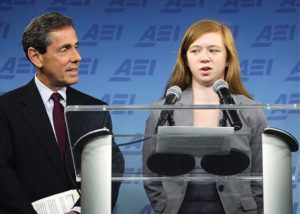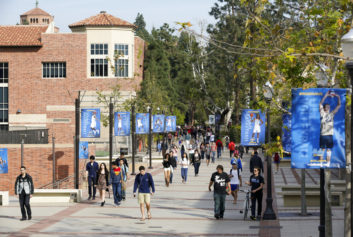
Full disclosure: I was one of 800-plus scholars who signed a friend of the court brief that was submitted to the court in advance of oral arguments. Some of the important scholarly work of my colleague Linda Tropp appears in the brief’s table of authorities. My scholarly work and testimony before the Texas State Legislature’s House Committee on Higher Education in 1997, was part of the movement of Rep. Irma Rangel and others that led to creation of the Texas “Top Ten Percent Plan.”
Whatever comes out of the SCOTUS on this case, social scientists and policy advocates have stated loud and clear that the court should not strike down as unconstitutional the kind of individualized review we give to each application for admission at universities like UT, where I went to school, and the University of Massachusetts Amherst, where I now teach. The efforts we make to create diverse learning environments at universities and colleges deemed highly selective because many more students apply than are offered admission are not wrong or unjust, but needed and good.
When I was 16 and about to graduate high school, I applied to the University of Texas, and I was admitted. However rigorous or not my high school was, with a graduating class of 77 students, I was not in the top ten percent, but somewhere in the middle. My SAT scores were not stellar either. I attended a 100 percent all-Black, Jim Crow undermined elementary school and a junior high school that had just started integrating with a handful of white teachers and students. These schools were in all-Black, segregated neighborhoods in the east Texas/Deep South city in which I grew up. Did so-called affirmative action enable me to be admitted? Let’s say it did. Was it a mismatch that hurt me and some supposedly more qualified white student that felt she was denied admission because I got in and she did not? Such questions have never troubled my mind for one second over the past 40 years. My SAT test score nor my high school GPA was an accurate predictor of my performance at UT. It was not easy, but I earned my degree and I benefited from going to the Texas flagship campus and it benefited from my attendance there, helping to make it a more vibrant and diverse learning environment.
My major was economics and my undergraduate experience involved some serious hard work and demanded loads of grit. I had to take several courses in statistics, calculus, and math for economists. I struggled but I made it through. My mentors, William “Sandy” Darity Jr. and Sam Myers, believed in me, pushed me, and provided me with role models that looked like me, but who also had very different class backgrounds from mine. Their fathers were university professors and deans while mine was a letter carrier for the U.S. postal service.
Wanting me to go on to graduate school in economics, Dr. Darity nominated me for an American Economics Association summer research and seminar experience at Northwestern University when I was 18. I got in and studied with Glenn Loury, tested wits with Marcus Alexis, and Warren Whatley was one of the graduate assistants who helped me to understand things like bordered Hessians and other kinds of constrained optimization problems. This for a Black student whose fifth grade teacher in our portable classroom building would prepare her lunch in an electric skillet (I remember vividly her cooking liver and onions) instead of teaching us how to reason mathematically. I did not go on to graduate school in economics. One semester when Sandy was on a sabbatical leave, I had an advising session with a professor who told me I was a good writer and better at qualitative analysis and therefore should look at fields like philosophy or classics, in which I had taken a number of classes and done quite well in.
Although in my first year I earned 33 credit hours and made the Dean’s List in classes ranging from Intro to Macro and Microeconomic theory, Latin, political science and calculus, my grades fell in later semesters. I got intensely involved protesting the racial isolation and rampant white supremacy on campus, the apartheid regime supporting investment policies of the University, and police brutality and murder in the Black community of East Austin as well as the Atlanta child murders and other killings that said Black lives did not matter in the world. I got swept up in the spirit of the times—“liberation today, degrees tomorrow,” “we are our own liberators,” and “emancipate yourselves from mental slavery, none but ourselves can free our minds.”
If Justice Scalia could have had his way, I would have gone to historically Black Texas Southern University and never have annoyed those smarter and superior white people at UT the way I did. At the “slower track” Black school, I would not have been “radicalized” and would have learned to feel better about myself and probably become an engineer, or gotten a business degree and really made something of myself. Scalia acts like a despicable pig and must be called out.
So the Court is going to strike down race-conscious college diversity. Chief Justice Roberts, and Justices Alito, Scalia, and Thomas, will form a majority and may get Kennedy too. With Kagan recusing herself, Breyer, Ginsburg, and Sotomayor would have to be very strong and work some magic they have never worked before to pull at least two of the other justices to a ruling in favor of UT. Get ready because that is not likely to happen.
Economics diversity advocates like Richard Kahlenberg are already telling us that a decree for Fisher will be a good thing. His argument goes that the elimination of preferences for children of alumni and reduction in merit-based scholarships, which diverts money from aid based on financial need, will do more to bring African, Latinx, and Native American students to very high research campuses that award higher status degrees. Thus, the current holistic review process that explicitly takes account of race after admission letters go out just on the basis of the high test score and high GPA applications will soon become history.
Why Kahlenberg thinks a ruling that strikes down consideration of race as a factor in college admission processes will necessarily strike down legacy considerations and lead to greater economic diversity on elite college campuses is a mystery. Holistic review and other limited race-sensitive admissions practices have not held back campuses from increasing their need-based financial aid or dropping legacy admissions. How a ruling for Fisher will lead to more children of the poor, getting into places like Berkeley, Emory, Michigan, or Yale, may be more of a hope than a likely outcome of a negative SCOTUS decision. The amici brief I co-signed explicitly showed that so-called economic diversity options are not effective alternatives to race-sensitive admissions.
A 2015 study by the American Council on Education “shows that the institutions using race-conscious admissions are much more likely than other institutions to be also already using a variety of other approaches” and that “if by themselves these alternative approaches were sufficient, there would be no need for attention to race.”
The outcome students, staff, and faculty can expect is that racial diversity on our already Trump-like, lily white, campuses will be even harder to achieve. Racial isolation is going to increase. From 2006 to 2012, the proportion of African American undergraduate students enrolled declined by about 25% and the proportion of Latino students fell by 24 percent at the University of Michigan, Ann Arbor, despite its best efforts to maintain racial diversity, after a statewide vote outlawed the consideration of race in admissions decisions.
Get ready for a long, hot summer that is not just the result of climate change.
Amilcar Shabazz is an educator and senior administrator with over 20 years experience working in higher education. At the University of Massachusetts Amherst he works in the Office of the Chancellor as Faculty Adviser for Diversity and Excellence and is also co-chair of the University¹s campus-wide strategic planning task force. He is a professor in and former chair of the W.E.B. Du Bois Department of Afro-American Studies.


